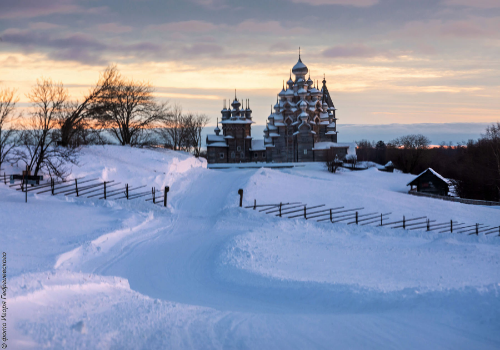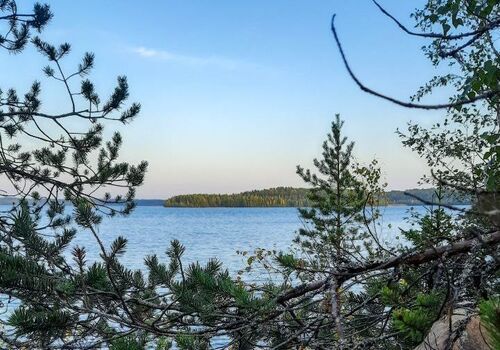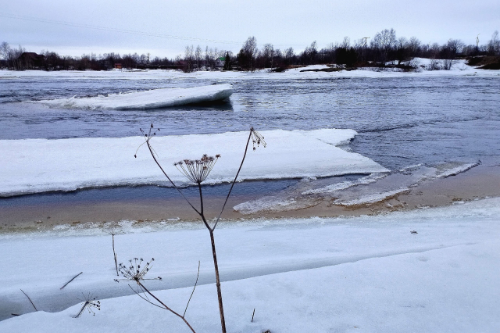In December, an article on the national tourist route «“All of Karelia!” Grand Tour» was published on the portal. It was prepared by Svetlana Kondrateva, Cand.Sci. in Economics, Senior Researcher at the Institute of Economics KarRC RAS, upon the editors' invitation.
«“All of Karelia!” Grand Tour» has the status of a national tourist route: it is officially endorsed by an order of the Federal Tourism Agency and included in the relevant register. To achieve this, the route was evaluated by an expert panel against a wide range of criteria.

Railway station in Petrozavodsk
«“All of Karelia!” Grand Tour» is a circular interregional tour running through our region, as well as the Leningrad Region and St. Petersburg. It is part of the Silver Necklace project and commended by the Russian Geographical Society.
The route is of cultural-education nature, combining ethno-, historical-cultural, ecological and gastronomic thematic dimensions. Its itinerary is rich in natural, cultural and historical sights. It includes: federal-level cultural heritage sites: Alexander Svirsky Holy Trinity Monastery and Korela Fortress Museum; World Heritage site Kizhi Pogost; historical cities of Petrozavodsk, Olonets, Sortavala; ancient Karelian villages of Kinerma and Kindasovo; Ruskeala Mining Park; Talviukko (Karelian Santa Claus) estate; natural objects - lakes Ladoga and Onego, Kivach waterfalls, the Girvas ancient volcano crater.
The tour is designed to last three days. Its length is 1100 km or 1300 km depending on the selected second-day itinerary option. The itinerary is variable and can be organized as separate journeys of varying duration.
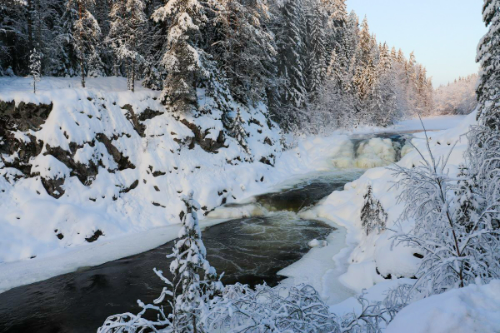
Kivach waterfalls in January
– Detailed presentation of the national tourist route «“All of Karelia!” Grand Tour» on the science-education web portal will help widely advertise the cultural and natural heritage of the Republic of Karelia and promote the republic’s tourism brand, – remarked the author of the article, Senior Researcher at the Regional Economic Policy Department of the Institute of Economics KarRC RAS Svetlana Kondrateva.
The scientist’s research specializations include tourism development in border regions, Arctic tourism, regional and spatial economics. In one of her studies, Svetlana Kondrateva analyzed the border regions of Russia in terms of preferences of international tourists. Analysis of the dynamics of inbound international tourism showed there is a correlation between the location of the region and its attractiveness to foreign tourists. It turned out that border regions attracted nearly as much inbound organized tourist traffic from abroad as Moscow and St. Petersburg, leaving behind the interior regions of the Russian Federation in this regard. Furthermore, more than a third of the total international tourism to Russia was channelled to seven federation entities: in addition to the two capitals, they were Primorsky Krai, Amur Region, Zabaikalsky Krai, Khabarovsk Krai, Pskov Region, Buryatia, and Karelia. That said, the events of the 2020s have caused fundamental changes in the format of cross-border tourism and recreational activities in the Russian borderlands. The scientific article launched a series of papers by Svetlana Kondratieva exploring the impact of the challenges of modernity on the tourism vector of the borderlands.
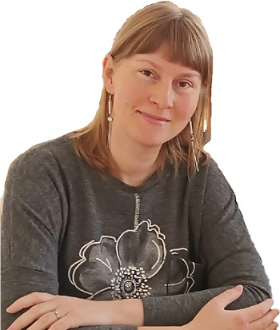
Svetlana Kondrateva, Senior Researcher
Institute of Economics KarRC RAS
Domestic tourism is also among the spheres closely addressed by the scientists at the institute. In particular, Svetlana Kondrateva and Senior Researcher from the Institute of Economics KarRC RAS Marina Moroshkina have previously analyzed the tourism and recreation possibilities of people from Russian regions with the lowest per capita income. Based on the results, the researchers formulated recommendations for regional government bodies, in which they outlined the lines that tourism development should pursue. These include broadening of offers for families with children, application of tourist cashback programs, activation of social tourism programs, development of student and event tourism.
Finally, one more highly relevant research topic is Arctic tourism. Svetlana Kondrateva is implementing a project supported by the Russian Science Foundation on developing domestic and inbound international tourism in the Russian Arctic with respect to the interests of the local community and sustainable nature management. Its results will be presented in the author’s upcoming publications.
Photos: Igor Georgievsky, Svetlana Kondrateva, Maria Dmitrieva / KarRC RAS




